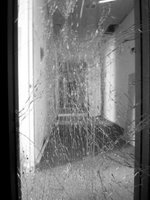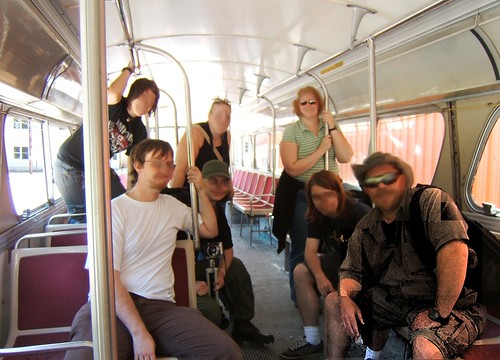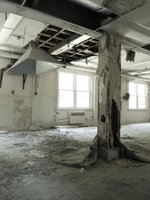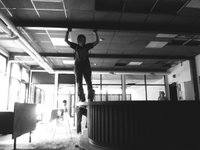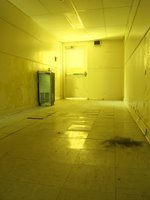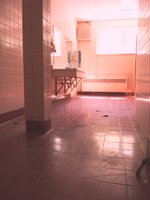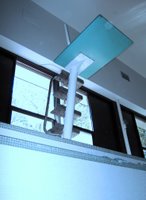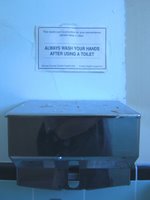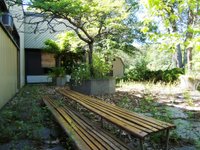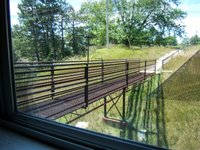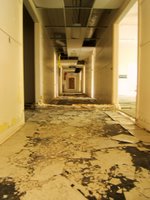 The Province of Ontario recognised tourism as an important social facet and so passed legislation in the 1880's to establish a parks system. (The word 'tourism' did not even come into broad use until the 1930's.) Most of these parks were largely inaccessible by road so steamers plied the lakes to wilderness paradises. Large grand hotels sprung up in the Muskokas and other vacation destinations to temporarily house these visiting excursionists like the 'Thousand Island House' on Alexandria Bay.
The Province of Ontario recognised tourism as an important social facet and so passed legislation in the 1880's to establish a parks system. (The word 'tourism' did not even come into broad use until the 1930's.) Most of these parks were largely inaccessible by road so steamers plied the lakes to wilderness paradises. Large grand hotels sprung up in the Muskokas and other vacation destinations to temporarily house these visiting excursionists like the 'Thousand Island House' on Alexandria Bay.Alternatively, some escaped to one of twenty or so grand hotels and resorts owned and operated by the Canadian Pacific Railway and accessible by - you guessed it - the railway. Unfortunately, only the well-off could escape the congested cities.
 This changed rapidly with the advent of the modern motor vehicle, now affordable to most of the middle-income earners.
This changed rapidly with the advent of the modern motor vehicle, now affordable to most of the middle-income earners. Also spurred on by the expansion of the King's Highway, throngs of new travellers headed out on the open road and smelled freedom in the air. New businesses sprung up along the road and at destination termini to cater to these excursionists.
 Popular for many years to the thriftwise tourist was the Autocamp like the Midland Autocamp shown here. This was not too unlike the modern provicial campground where one could pull up and then pitch up.
Popular for many years to the thriftwise tourist was the Autocamp like the Midland Autocamp shown here. This was not too unlike the modern provicial campground where one could pull up and then pitch up. Many wonderful accessories were developed for this new breed of camper including tenting tarps designed to attach directly to the family's Ford.
Many wonderful accessories were developed for this new breed of camper including tenting tarps designed to attach directly to the family's Ford.Although tent sales peaked in Ontario around 1925, there was a trend starting with many autocampers to bring along less equipment.
 Soon, realising a new market demand, the Motel (from MOtor hoTEL) came into being. The earliest ones were usually a simple design of a single building of connected rooms or alternatively a series of small cabins. Unlike their predecessors, the auto camps and tourist courts, motels quickly adopted a homogenized appearance. Typically one would find an 'I' or 'L' or 'U' shaped structure that included rooms, an attached manager's office, and perhaps a small diner.
Soon, realising a new market demand, the Motel (from MOtor hoTEL) came into being. The earliest ones were usually a simple design of a single building of connected rooms or alternatively a series of small cabins. Unlike their predecessors, the auto camps and tourist courts, motels quickly adopted a homogenized appearance. Typically one would find an 'I' or 'L' or 'U' shaped structure that included rooms, an attached manager's office, and perhaps a small diner. Postwar motels sought more visual distinction, often featuring eye-catching neon signs which employed pop culture themes that ranged from Western imagery of cowboys and Indians to contemporary images of spaceships and atomic symbols. Some unique designs incorporated Windmills (the Dutch could always be counted on for their cleanliness) or Wig-Wams (where the owner I'm quite sure was a white dude).
Postwar motels sought more visual distinction, often featuring eye-catching neon signs which employed pop culture themes that ranged from Western imagery of cowboys and Indians to contemporary images of spaceships and atomic symbols. Some unique designs incorporated Windmills (the Dutch could always be counted on for their cleanliness) or Wig-Wams (where the owner I'm quite sure was a white dude).A large number of motels were family owned and operated and witnessed an increased volume of visitors. The largely anonymous interactions between the owners and vistors of these motor courts made them ideal places for couples to secretly rendez-vous and play 'mommy and daddy' using the name 'Smith' - sometimes the only way for a couple to romatically engage in the restrictive 30's and 40's. It could be argued that it would be simple evolution that these motels would attract people seeking anonymity for altogther different resaons. The famous outlaws Bonnie and Clyde were frequent guests of motels, using them as hideouts. The motels' potential for breeding lust and larceny alarmed then FBI chief J. Edgar Hoover. Within an article entitled "Camps of Crime" ('American Magazine', Feburary 1940), Director Hoover vigorously attacked early motels for the poor surveillance of their customers and bad record-keeping. He labeled some auto courts "a new home of crime in America, a new home of disease, bribery, corruption, crookedness, rape, white slavery, thievery, and murder". Very tough talk indeed for man rumoured to like wearing dresses (Look for Agent's Mulder & Scully's revealing photograph).
 The Motels' seedy reputation in this era was at least partially deserved. Some small number establishements were poorly built, poorly maintained, equipped with primitive sanitation systems, and managed by people who didn't care much. Most courts, however, were cozy cabins operated by concerned 'mom-and-pop' owners who knew that to survive the Depression years, the business needed to be successful.
The Motels' seedy reputation in this era was at least partially deserved. Some small number establishements were poorly built, poorly maintained, equipped with primitive sanitation systems, and managed by people who didn't care much. Most courts, however, were cozy cabins operated by concerned 'mom-and-pop' owners who knew that to survive the Depression years, the business needed to be successful. The new 400-series Highway construction was delayed partly due to material / manpower shortages after World War II and the onset of the Korean war in 1949.
The new 400-series Highway construction was delayed partly due to material / manpower shortages after World War II and the onset of the Korean war in 1949.Some pressure was placed on the provincial government to relieve the bumper-to-bumper traffic on the major route to 'cottage country' - Highway 11. As a result, Highway 400 was constructed and opened in 1952. As a result, vacationers could more effeciently and rapidly arrive at thier holiday destination. Unfortunately, this was a death knell for the businesses such as the fuel stations, diners, and motels strung along Highway 11 as it wound through Barrie.

Some motels did not survive long - like the Lor-Lee which featured a convenient Texaco gas station. And some motels did survive such as the Lake Simcoe Motel and the Barrie Huronia Motel. Constructed sometime in the 1940s, the Huronia motel catered to travellers on their way north to cottage country when Bradford Street / Highway 11 was the main throughfare from Toronto to cottage country via Barrie. In recent years, all prestige vanished, and it seems that rooms were either rented by the hour or by the month. The smarter criminal element never stayed at the Huronia as this was typically where the Police would look first.
 Unfortunately the Barrie Huronia motel caught fire in June 2006 and was subsequently condemned.
Unfortunately the Barrie Huronia motel caught fire in June 2006 and was subsequently condemned.
The City of Barrie purchased the site for $800,000 and is planning to demolish all the buildings sometime in Autumn (2006) to allow the creation of a storm-water management pond along the lower portion of the Hotchiss Creek area. Yet another site to add to the local Health Unit's West Nile monitoring programme.
Some more exploration images at my http://www.uer.ca/~copy-6/copysix_gallery/20360

